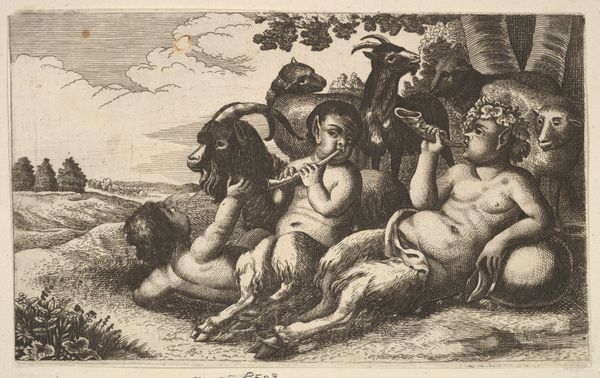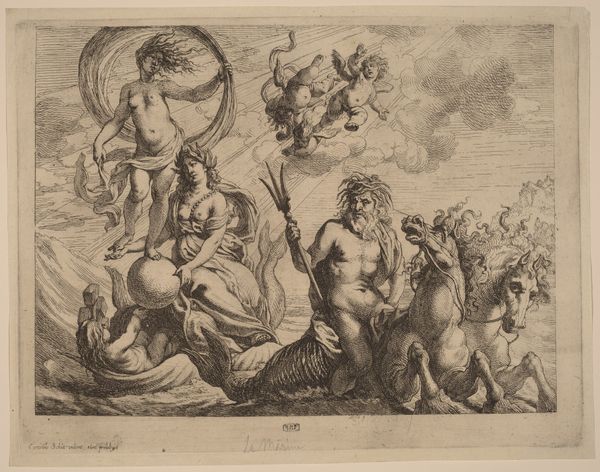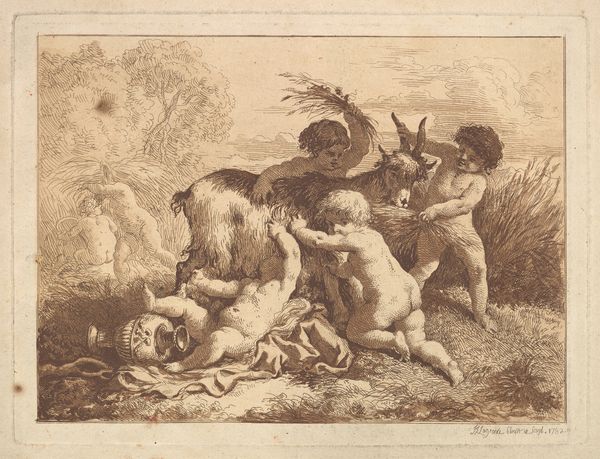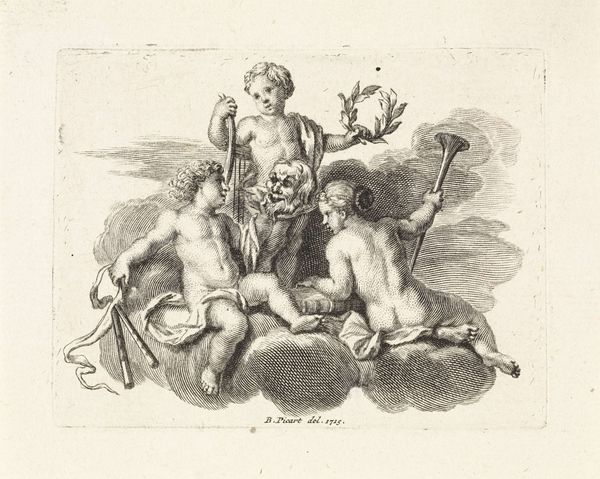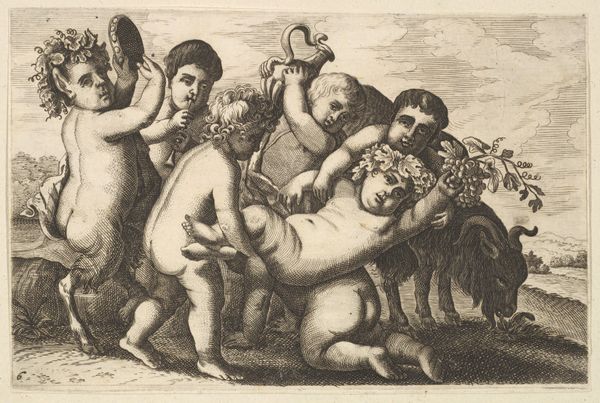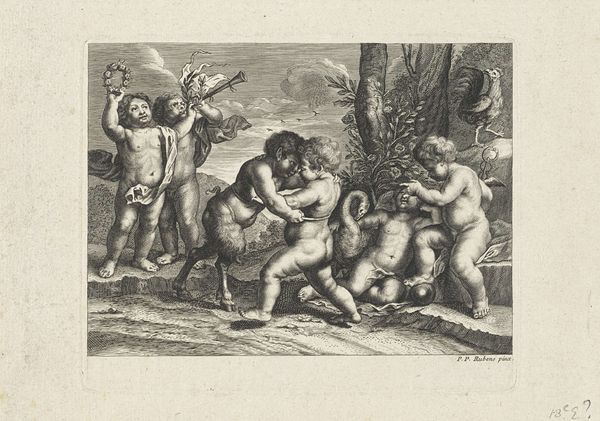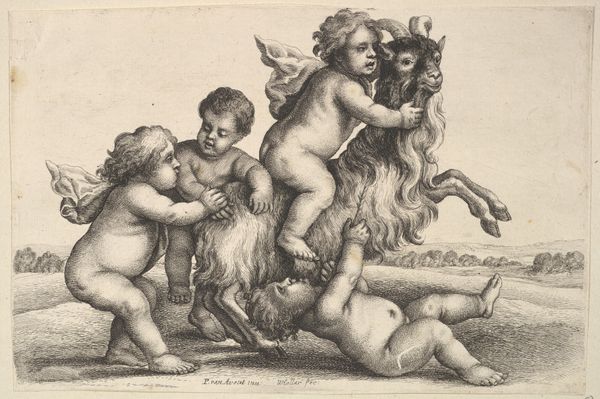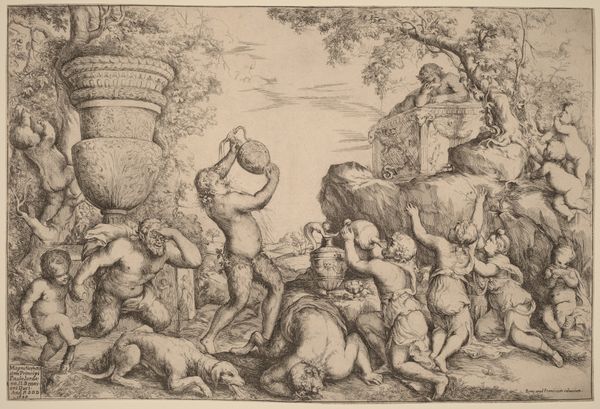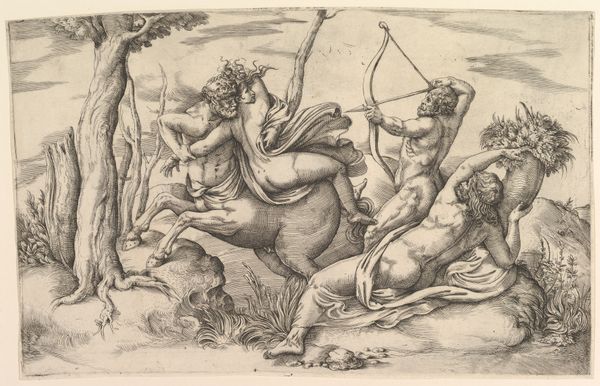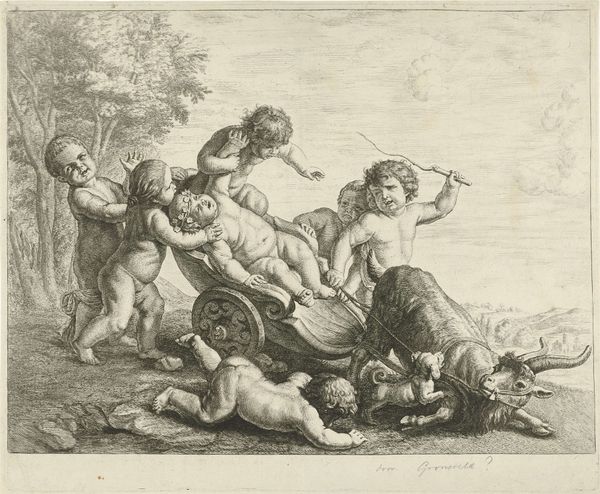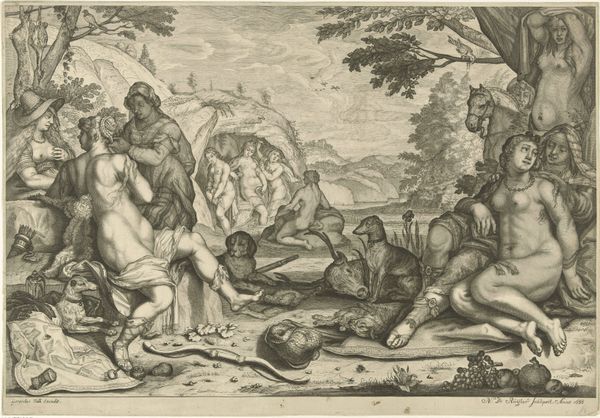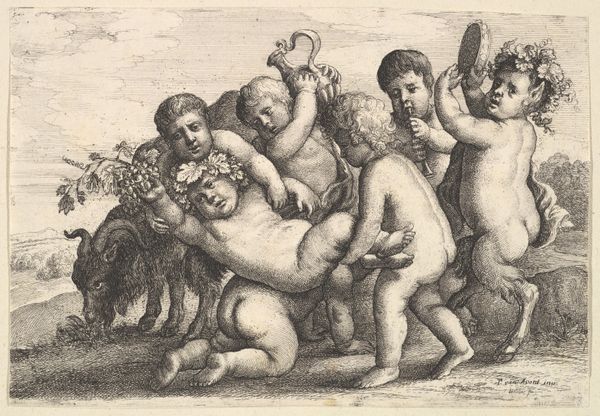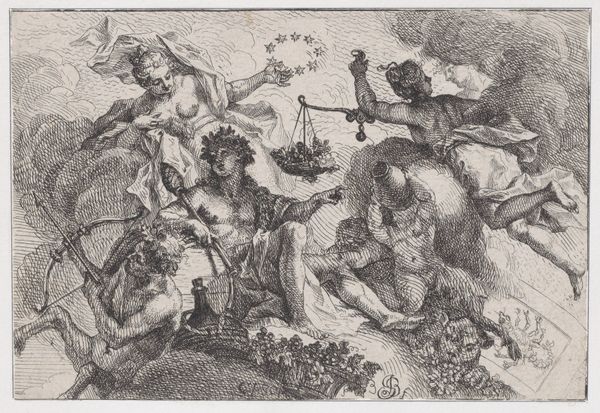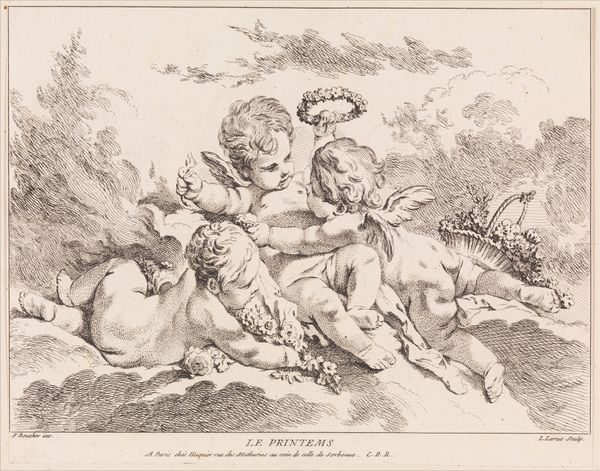
drawing, print, engraving
#
drawing
#
allegory
#
baroque
# print
#
landscape
#
boy
#
figuration
#
history-painting
#
musical-instrument
#
engraving
Dimensions: Sheet: 5 1/2 × 8 1/8 in. (13.9 × 20.6 cm) cut into image at top and sides
Copyright: Public Domain
Curator: Wenceslaus Hollar's engraving, "Two young satyrs and a boy", made in 1647, presents us with an intriguing allegorical scene. The etching technique is very apparent in the fine, precise lines here. What do you make of it? Editor: There's something unsettling about it. The scene appears idyllic, a pastoral interlude with music, but the faces have a stark, almost grotesque quality to them. The meticulous details almost amplify that uncanniness. Curator: Absolutely. The medium, engraving, allows for this striking contrast. Hollar was meticulous; examining the materials closely shows us that the very precision afforded by the engraved lines plays with notions of beauty. We need to consider, too, the role of prints and drawings within Baroque-era visual culture—a readily disseminated commodity for scholarly and upper-class circles, meant for study and discussion. Editor: It certainly reflects the historical context. Depicting mythical beings within what appears to be an observable landscape allowed artists to explore complex relationships between the real and imagined worlds. Prints, by their very nature, facilitate the distribution of these concepts on a mass scale. Were such scenes popular at the time? Curator: Allegories involving satyrs were relatively common, drawing on classical motifs. The figures themselves raise questions of social power structures and interpretations, referencing ancient myths but made accessible and replicable through modern printmaking technology. Editor: You can really see the appeal this had in the time. Considering that prints could be more readily accessible than large paintings, it's possible the market for this particular piece could've reached all kinds of smaller, personal collections across Europe, which may have amplified its influence through the Continent. Curator: Precisely. How the dissemination of the image and its engagement affected local economies and socio-political ideas throughout history is a great perspective, as prints make artworks more mobile across boundaries of class, nations, and private spheres. Editor: Considering how closely Hollar managed to depict the likeness of animals and figures on the relatively diminutive size that these etchings usually were, there is little wonder that these would quickly be dispersed through wealthy social circles. Curator: Thinking about its materials, production, and circulation lets us dig deeper into what this image signifies and its social life back in the seventeenth century, so it still has great symbolic value for our knowledge. Editor: I appreciate how analyzing it together illuminates how even seemingly simple imagery has this intricate link to a certain moment of artistic vision and societal context. Curator: A rewarding, if uncanny, example of art bridging epochs, as you remarked!
Comments
No comments
Be the first to comment and join the conversation on the ultimate creative platform.
